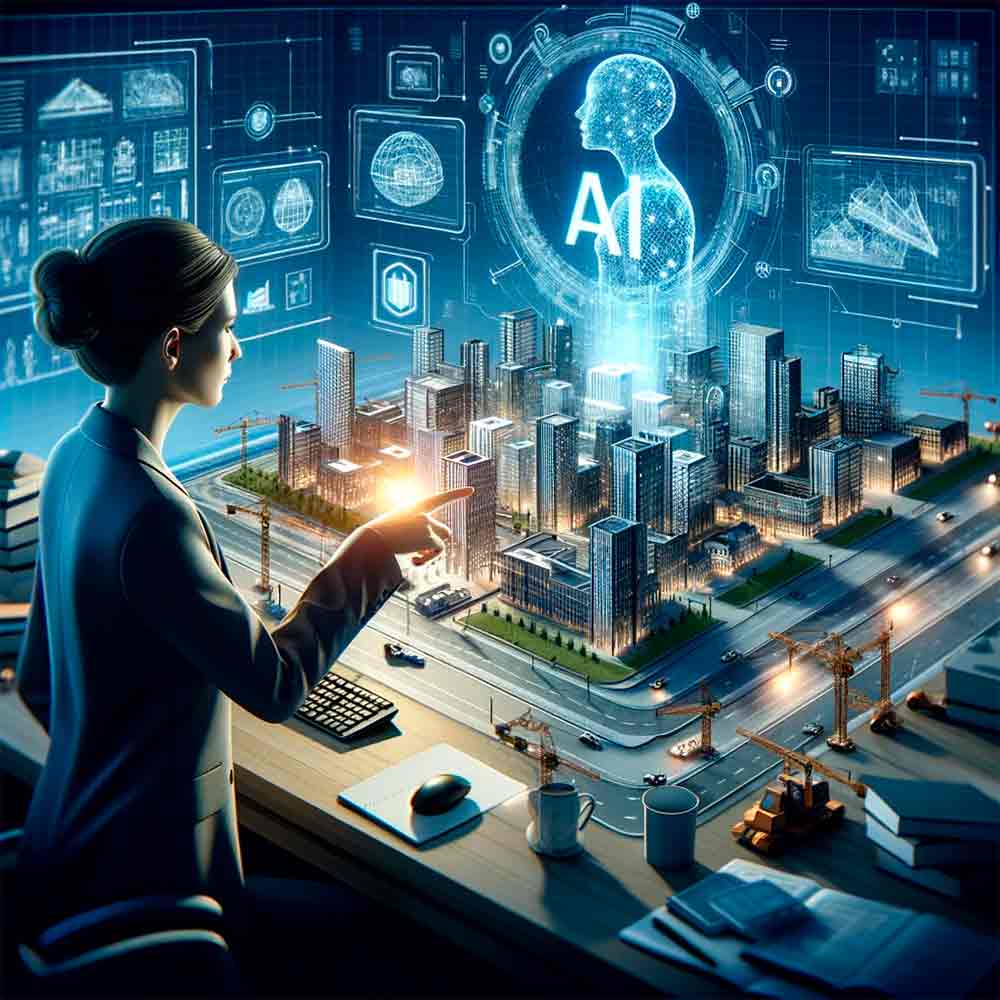Architectural design is the imprint that each era leaves on time. Whether it’s a megalithic construction from thousands of years ago or the latest avant-garde skyscraper, it encapsulates human beliefs, ambitions, and fears. Today, the integration of AI in architecture and construction is revolutionizing how we conceptualize and build housing and infrastructure. In fact, a recent article in Building magazine suggested that machine learning technologies are poised to replace 37% of tasks traditionally performed by humans in this sector.
In this article, we delve into how this transformation will manifest in various areas:
From mind to screen: Image modeling
One of the primary domains where AI is complementing human intelligence is in the initial design proposal phase. This extends beyond functional architecture firms to include major industry players, often recognized as “signature architecture” firms. A case in point is Zaha Hadid Architects, a prominent firm responsible for iconic projects such as the Guangzhou Opera House in China and the Beijing Daxing International Airport.
In a recent discussion, the current head, Patrik Schumacher, revealed the studio’s utilization of text-to-image AI tools like DALL-E 2 and Midjourney in the early stages of projects. Schumacher emphasized that this approach aids in competitions and provides starting ideas to clients. Notably, they’ve succeeded in getting artificial intelligence to generate images aligning with the company’s distinctive style, even if they aren’t initially functional. Subsequently, 3D modeling begins based on 10-15% of the initial images.
Planning projects and managing documentation
Beyond visualizing proposals, AI in architecture plays a less visually impactful yet crucial role in data management and safety compliance. This includes:
- Data management. From synthesizing tender specifications to classifying all documents generated during construction, AI streamlines data processing significantly.
- Project planning. AI assists in integrating all elements, such as plumbing, ventilation systems, or electrical installation, ensuring compliance with client specifications and legislation. It also plays a crucial role in financial planning, costing, and optimizing the amount of raw materials for sustainable construction.
Both features are already being integrated into the primary software tools used in modern architecture.

Support in construction and safety
As construction embraces advanced technologies like exoskeletons and augmented reality glasses, AI is proving its capabilities in real projects. Promising applications include:
- Calculation of construction deadlines and anticipation of delays. AI processes vast data from IoT sensors, artificial vision systems, and material consumption to detect bottlenecks and potential delays, as demonstrated by ACCIONA on the Broadway subway project in Vancouver.
- Operator monitoring for improved safety. Using data from cameras and wearables enables the monitoring of operator presence near dangerous machinery and ensures adherence to safety protocols. This approach facilitates quicker intervention in case of accidents.
- Building maintenance. AI enables anticipating material wear and tear or detecting damage early, integrating into Building Information Modeling (BIM) models to optimize building maintenance throughout its lifespan.
Generative design: The final frontier of AI in architecture
Looking ahead, a future is emerging where generative design applications can create entire buildings with AI, influencing not just decision-making but also the initial design, material selection, and problem-solving in areas such as window layout and ventilation ducts.
A recent article in The Guardian explained how an architect showcased AI software. On the screen, furniture, corridors, and rooms were rearranged in real-time as the proportions of a hotel project changed. After the demonstration was over, the journalist applauded the software’s potential. The architect immediately qualified it: that five-hundred-room hotel had already been built; the entire process was completed within four and a half months. This tool is not part of the distant future: it already has over 50,000 users in China alone.
In the words of Neil Leach, author of “Architecture in the Age of Artificial Intelligence,” AI is liberating architects from routine computational tasks, allowing them to focus on creativity and overall project strategy, paralleling trends in other disciplines.
Source:



